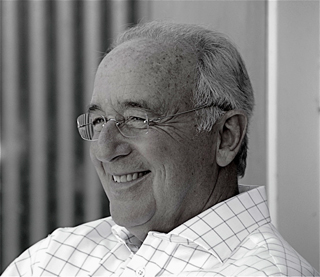Boyd & Beyond 2011, Quantico, VA
Monday, October 17th, 2011[by J. Scott Shipman]
Following the remarkable enthusiasm of the participants of Boyd & Beyond 2010, the expectations with respect to this years’ second annual event were high and in my estimation, no one was disappointed. Both days began at 0800 and went until 1800, with large groups of participants meeting after the meeting over food and beverages to continue the conversations. For me, the adrenaline was running so high, I got less than 8 hours sleep in the two days; as winding down was easier said than done.
Through the good offices of Mr. Stan Coerr, GS-15 and Colonel of the USMCR, our group met at the USMC Command and Staff college for the two day, no-PowerPoint event. Unlike last year, there were no initial retrospectives on John Boyd’s life. Instead, our agenda moved directly to broad themes derived from Boyd’s work and legacy. After lunch on Friday, the 29th Commandant of the USMC, General Al Gray made a surprise visit and spoke for two hours on his friendship and association with Boyd and the period when the USMC was integrating Boyd’s ideas on maneuver warfare. Those two hours went by in a flash, and I believe our group would agree, Gen Gray could have kept our attention for the remainder of the afternoon.
The morning began with speakers discussing Boyd’s legacy to the military services. Don Vandergriff lead off with an excellent review of methods he has adopted to help train leaders in adaptive decision making. Picking up where he left off last year, Don demonstrated the power of his methods. Don was followed by a presentation that challenged our group on the power of context and relationships between law enforcement and the community. Using a vehicle of an evolving story narrative of a historic event, our group was provided facts in a method akin to peeling an onion—after all the facts of the story had been shared, opinons were solicited; not surprisingly the conclusion was a surprise, but illustrative of a leader who “sees” (think: the Observe of OODA).
We were very fortunate to have uniformed representatives of Boyd’s US Air Force, and a representative from the US Navy. Speaking separately on different topics, these three bright young men provided observations from within their respective services on leadership, learning, and organizational adaptability. They reviewed the perils of a zero-defect culture where metrics and hardware are more important than people. [Reminded of Boyd’s famous quote: People, ideas, hardware: in that order!”]
Marcus Mainz, Major USMC, followed-up and extended on his observations made last year with respect to Boyd’s continuing influence on professional military education in the Marine Corps. He emphasized time and fighting on the three levels of the physical, mental, and moral, and the importance of deception in the disruption of any enemy’s OODA. He also provided an excellent quote:
“Training is for the known, education is for the unknowns.”
Maj Mainz was followed by Mark Williams in a discussion on the epistemology and ontology of Boyd’s OODA, and the implications for warrior training. Mark is a former fighter pilot and spoke with passion about the importance of continuous learning and adaptability. Using riveting example from his experience in the cockpit, Mark illustrated the need for fluidity between the Observe and Orient.
Bruce Greene, Major, USMC, presented on the topic of unmanned vs manned aircraft in relation to Boyd’s theories. This presentation provoked a lively discussion on the both the moral and practical aspects of unmanned vehicles—particularly in light of fratricidal events involving UUVs and US ground troops. Major Greene emphasized the “morality of attitude” with respect to decisions in this arena.
Day two had a lively start requiring our group to orient on the fly. We arrived to find power was out in the Command & Staff College building. Maj Mainz, in a deft move of Boydian orientation, suggested we decamp to the Expeditionary Warfare School, about a mile away. We moved coffee, bagels, coolers, books, bags and people in about half an hour and picked up where we left off.
Dr. Terry Barnhart led off with a remarkable exercise using questions to determine real needs. Terry contends that questions elicit more information and buy-in than statements, and with this exercise proved his point. Terry divided participants into two groups to tackle two problems ad hoc using a simple and straight-forward process. This robust exercise worked quite well and many remarked they were taking the experience and example back to their respective organizations.
World-renowned law enforcement expert and combat Marine, Sid Heal used a rare-for-B&B PowerPoint presentation to discuss Forecasting With Density. Sid’s presentation was engaging and informative and covered how law enforcement can use density in nature, urban areas, and data for law enforcement—particularly riot control. The presentation was rare in that the slides truly complimented the topic. Sid also offered a notable quote:
“All human understanding can be boiled down to comparison and metaphor.” {Regular zenpundit readers perhaps know the appeal to me of patterns, metaphors and analogies, so this quote will be remembered and used.}
Fred Leland, longtime user of Boyd’s ideas, offered a riveting presentation on interaction and isolation in police operational art. During his talk Fred reiterated the hazards of a culture driven by policies and procedures at the expense of thinking and common sense.
Chip Pearson, owner of a software company in Minnesota, spoke again this year, providing updates from last years’ presentation and insight into the evolution of his company. Chip made a distinction between those “in business to make money, or those in business to satisfy customer needs.” This comment reminded me of Boyd’s “to be or to do” challenge. During his talk, Chip emphasized the importance of common understanding for organizational harmony. It was also during Chip’s talk that Sid Heal offered another quote to remember:
“Mediocrity and controversy cannot peacefully coexist.”
Michael Moore gave his much anticipated presentation on his Win Bowl concept. Michael’s ideas tie directly to Sun Tzu’s:
“Military actions are like water, flowing from high to low points…And just as water adapts to the ground it flows over, so a successful soldier adapts his victories to the specific foe he faces.”
(Section 6:29, 31)
Michael demonstrated how his Win Bowl concept captures the fluidity of tracking goals. He says the model has been used in the learning environment and demonstrated the simplicity and approachability of the model. Michael suggested his outline offers a “”mental tapestry” metaphor Boyd was seeking in military strategy” and I believe he he is right.
Longtime friend of this blog, Adam Elkus followed with a powerful talk on Boyd’s influence on campaign planning and the influence of design theory. Adam emphasized the importance of simplicity in the development of strategy and the avoidance of tools, jargons, and excuses that more often than not decrease clarity of purpose.
Katya Drozdova of Seattle Pacific University was our concluding speaker. She offered her expert insight into alternative strategies in the Afghan theater that would be revolutionary in scope and a significant change to current US government policy. For instance, she offered the US should consider granting autonomy to those areas of Afghanistan that have demonstrated a capability to sustain and secure themselves.
This review did not include all of the speakers. Last year I took over five pages of notes, however for this event my notes were more sketchy, so my apologies in advance for the speakers and topics not covered. I would encourage those who attended to fill in blanks that I no doubt missed or neglected. Also, last year I published the reading list recommended by participants. I will do this in a update to this post in the days to come, so stay tuned.
We have every intention of having another event the same weekend in October next year, so stay tuned and keep the dates open on your calendar for Boyd & Beyond 2012.


 make for an exciting action film. Or perhaps a series of films along the lines of The Bourne Identity or those Tom Clancy movies with Harrison Ford. All well and good. But that is not why The Profession is worth reading – that’s merely why it is fun to read.
make for an exciting action film. Or perhaps a series of films along the lines of The Bourne Identity or those Tom Clancy movies with Harrison Ford. All well and good. But that is not why The Profession is worth reading – that’s merely why it is fun to read.



